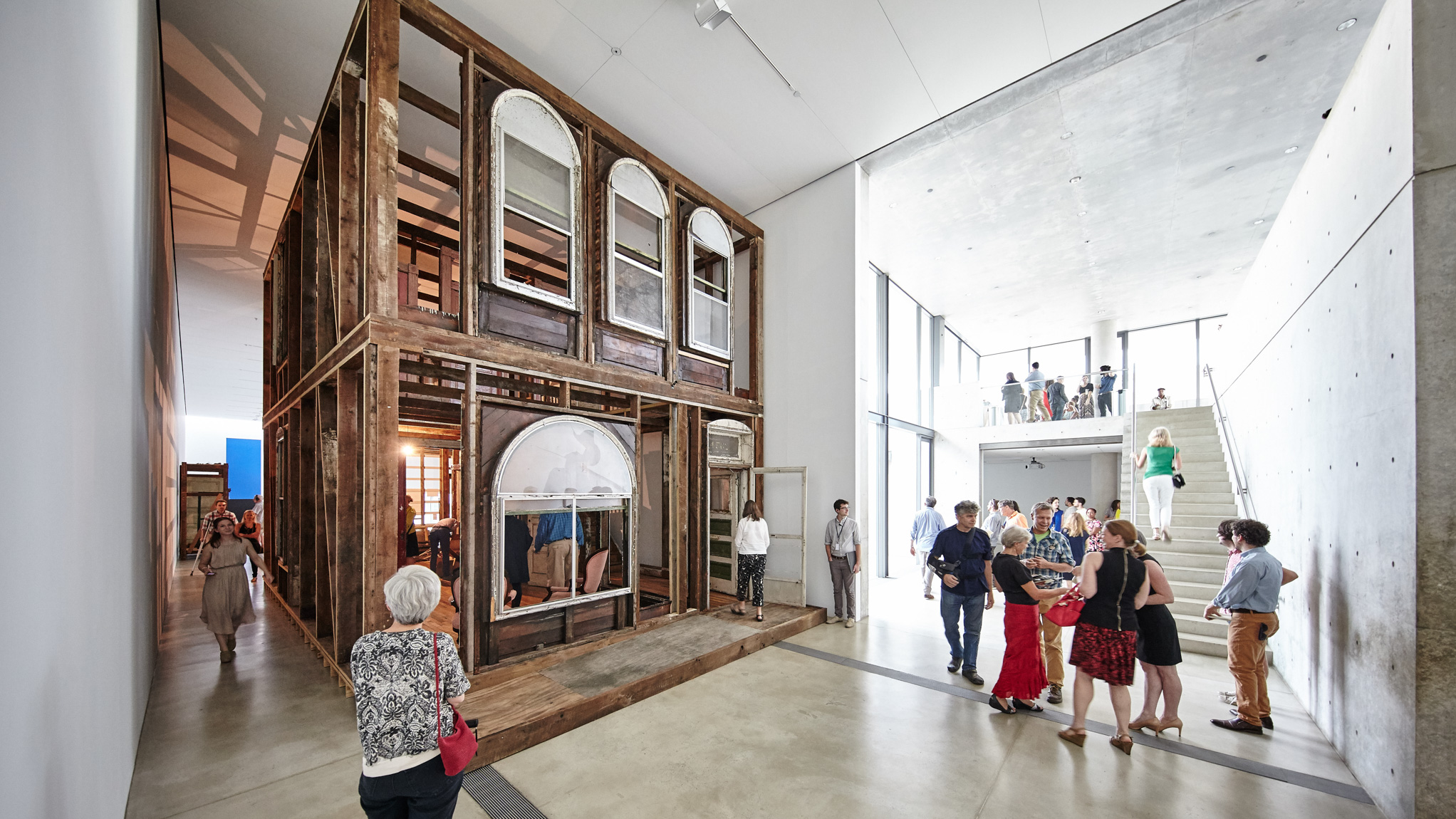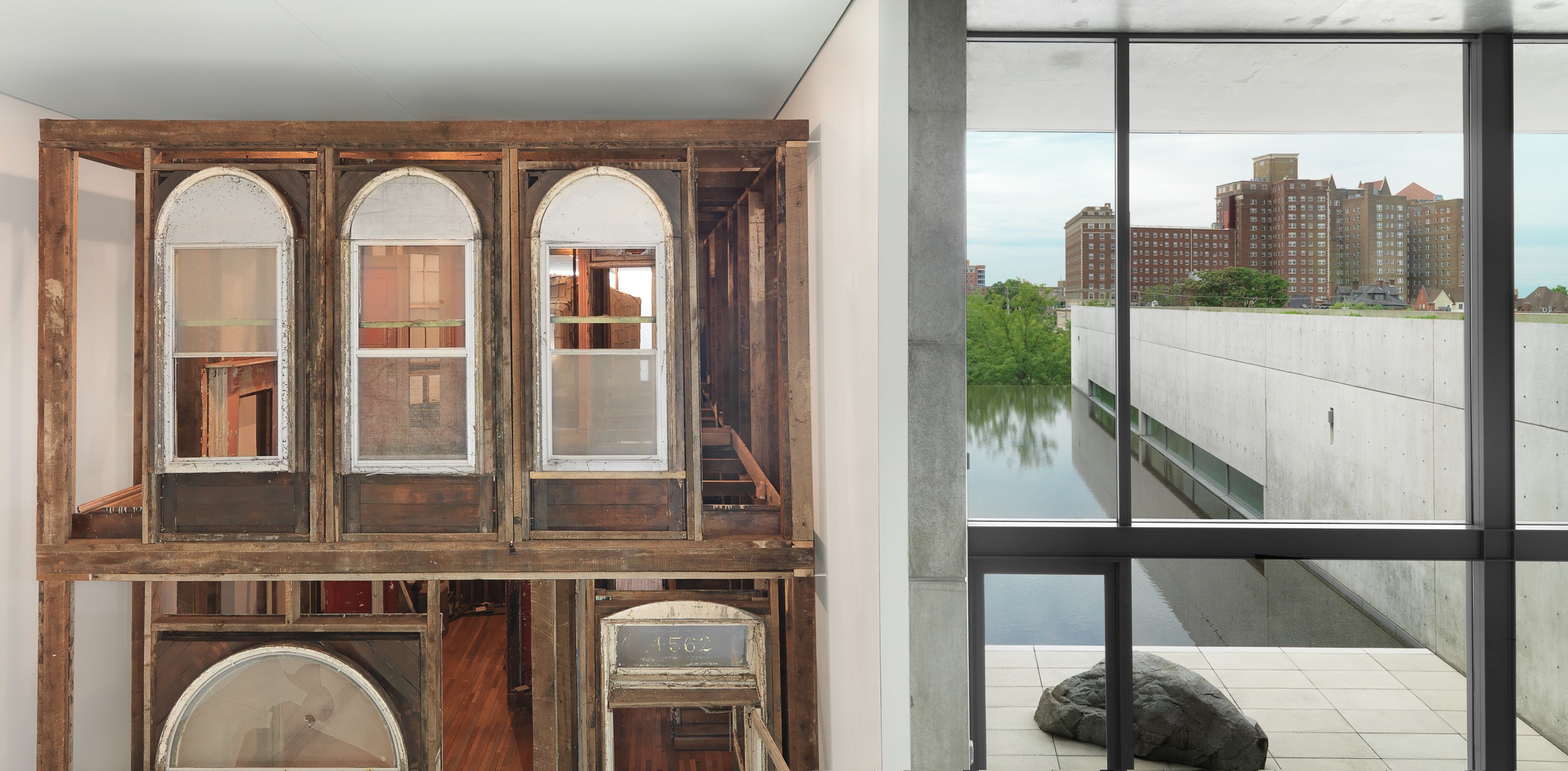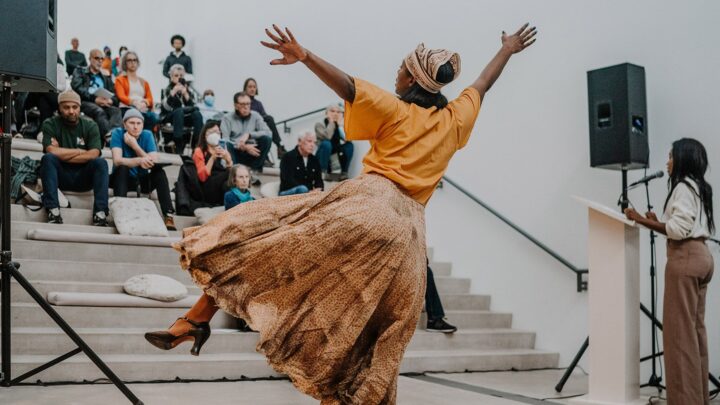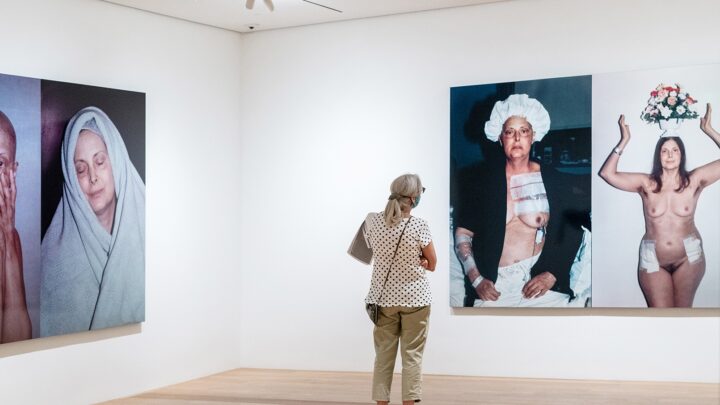For the next few weeks, a house will exist simultaneously at 4562 Enright Avenue in St. Louis, where it was built over a century ago, and in the main gallery of the Pulitzer, where it is reimagined and repurposed by German architecture collective raumlaborberlin. While the brick exterior of the long-abandoned house remains at the original address, its beams, windows, doors, and other materials have been salvaged, with many of them being used to create a mirror site at the Pulitzer—a two-story skeletal structure that evokes the building’s frame and interior. This structure occupies an area identical in size to that of the original house, but its interior disrupts expectations. Staircases lead to a nonexistent second floor, and walls are supplanted by studs fitted with salvaged architectural elements; objects and documents of the house’s past and present are combined with speculations for the future. By the close of the exhibition, what is left of the original Enright Avenue house will have been completely dismantled, its materials destined to be repurposed for future construction.
A specter-like reflection of the original house, 4562 Enright Avenue is more than its physical presence: it is an invitation to reflect on how houses, neighborhoods, and cities are built, sustained, and transformed. It creates a pause in the demolition process and a filter for inquiry, as we are asked to consider a home, in its many forms, as a marker of identity and a site of memory—a space to reconsider what buildings become, and what they leave behind, when they are taken down. While many will experience this artwork in the gallery, it is one part of a trajectory that began with a series of dialogues and culminates in the transformation of the house in the Pulitzer before the materials return to local partners for reuse.




